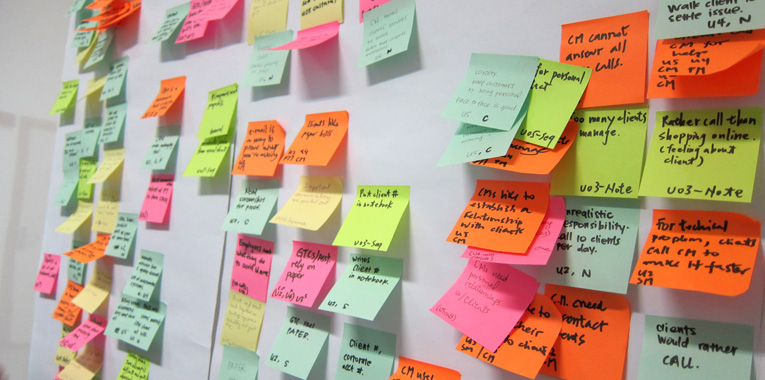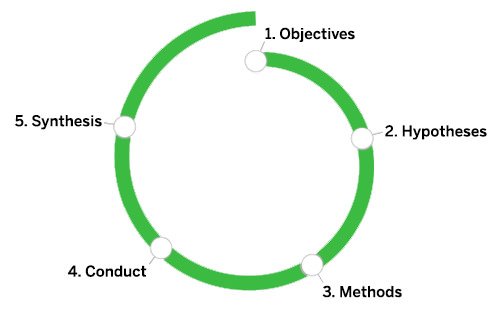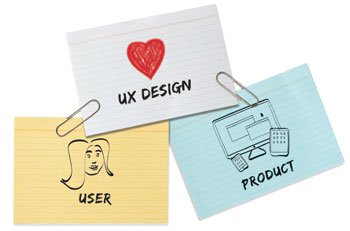The answer is USERS. You need to research your users.
Every now and then, companies contact agencies like TMO Group asking to help them figure out why their new website or new app is failing. They have spent so much time and money on this project to make it look good – the fact that users don’t think so seems shocking.
Why does this happen? Most of the time the reason is that you didn’t conduct your user research before the actual UI or UX design. Or maybe you haven’t even heard the term “user research” before. Let’s look at what it is.

What is User Research?
Designing without research is like getting into a taxi and just saying, “Drive.”
User research is the study of how users interact with your product. It focuses on practical, functional tasks – how users achieve those tasks and what problems they might experience.
It is an iterative, cyclical process in which observation identifies a problem for which solutions are proposed. For example, user research would identify a practical issue (users don’t click “More info” as often as we expect them too); we guess why it happens (can it be they just can’t find it?); research is done to check if our guess is correct: we can interview users or we can test a version with a big bright button; changes are made reflecting the outcome of the research.
User research is the study of behaviors, needs, and motivations of your product’s users. It is done through both qualitative (observation, collecting feedback) and quantitative methods (analysis of interaction data, building analytical models).
Doing user research means building websites based on what visitors want rather than on what we assume they want. As employees, directors and designers, we tend to think of ourselves as primary users of our site when actually we’re not the target users at all. Here’s a quote I really like: “Even the most well thought out designs are assumptions until they are tested by real users.”
If you don’t do research and a product fails, you have no idea where the problem lies. If you conduct user research, it will result in a more delightful product for your users — a product that will be used and loved.
To summarize what user research is, here’s another quote of one of the industry gurus, Mike Kuniaysky. He succinctly defines it as “the process of understanding the impact of design on an audience.”
The types of user research you can or should perform will depend on the type of site, system or app you are developing, your timeline, and your environment.
How does User Research work?
When users interact with a website or an application, questions they ask themselves (probably subconsciously) are “What value can I get? Can I find how to get it?” Is it easy to use? Was I having a good time doing that?” If the Answered were “Yes” to all of these questions – the user had good user experience.
Obviously, we cannot read those thoughts directly out of our users’ heads (yet?), so the actual user research process tries to get this information indirectly, following the user research process.
There are five distinct steps, which you go through when gathering information from people to fill a gap in your knowledge.
1. Define Objectives
This might be the most important (yet the most overlooked) part of the process. What exactly are we trying to achieve? What is the problem we are trying to solve? What is it that we don’t know but need to know about our users and their behavior?
2. Propose a Hypothesis
This can be something that we think we know – and need to check. Why do you think something is happening? If you are out of ideas, it can even be something random (“do users avoid this button because it is green?”)
3. Choose Methods
What are we going to do, to confirm or debunk our hypothesis? The choice of methods will very much depend on the questions you are trying to answer, but also on the resources you have at hand. What manpower, technology, and data you have / need / can get to answer those questions?
4. Conduct the research
On this stage you actually collect the data through the methods you have chosen. Running an AB test, conducting an interview or focus group, collecting the click data – this is the meat, the bread and the butter of your user research.
5. Analyse the results
Finally, you have the data to prove or disprove your hypothesis – and, if you did everything right, to answer the question you have started with. Chances are, the data showed you what you should be doing to solve the problem, and maybe you even stumbled upon some other opportunities to further improve your user experience. This iteration of user research is now complete, it is time to act.
Why is User Research so important?
There is no part of the UX design that is more important than user research. It may sound like an overstatement, but think about it: if you didn’t have any idea what users wanted, if you planned your interface / page / flow in a way that contrary to what users were comfortable with, you might as well, didn’t do anything.
On a more practical note, well-conducted user research can reduce wasted development time, decrease the cost of customer support, increase conversion rates and improve customer retention and loyalty. Above all, it saves your money and generates revenue.
Creating user interfaces involves intricate and complex decisions, aimed at providing users with good experience. Leaving the user out of making this decision is a bad strategy, as users are the ones who know what a good experience is. And while most of the time you cannot ask them, user research is a tool that can help you to pick their brains and eventually achieve your goals.
Here’s a thought to leave you with:
UX – U = X
(where “X” now means “don’t do it”).


